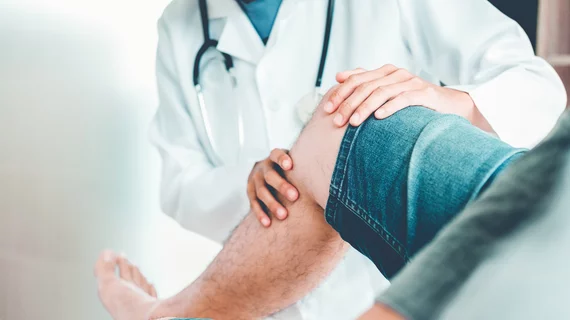Interventional procedure gives osteoarthritis patients years of pain relief
Interventional radiology procedures could represent a more minimally invasive pain relief option for patients struggling with osteoarthritis (OA) of the knee.
Genicular artery embolization (GAE) targets synovial blood vessels in the leg that are believed to cause painful inflammation that contributes to the severe discomfort most patients experience with OA. It involves the insertion of a catheter into the arteries via a small incision in the hip. Tiny embolic agents flow through the catheter to the affected arteries, blocking them off, thus reducing pain and inflammation. The procedure is typically completed in an outpatient setting, taking around two hours with a similar recovery time.
A new study in the Journal of Vascular and Interventional Radiology analyzed the long-term outcomes of patients who had undergone GAE to relieve their knee pain. Researchers found that they enjoyed relief for years after the procedure, prompting the team to suggest that GAE could represent a viable option for those who are not candidates for total joint replacement surgery.
“Knee osteoarthritis is a leading cause of adult disability and, until now, most minimally invasive treatment options have been proven to provide only short-term relief, measured in weeks or months,” lead author Siddharth A Padia, MD, professor of radiology at UCLA Health, and colleagues noted. “For patients who are not candidates for knee replacement surgery, our study shows that GAE provides durable benefit to many patients, measurable for up to two years, a great leap forward in offering this cohort lasting relief.”
The study included 40 patients with symptomatic, moderate to severe OA who had undergone GAE. One year post-procedure, 66% reported sustained relief; of those, 72% continued to experience a minimum 50% reduction in OA pain at the 24-month mark. None of the patients reported any adverse events.
The procedure could be an effective, longer lasting alternative to other pain relief options, such as intraarticular corticosteroid injections, especially for individuals who are not candidates for total joint replacement surgery, the group suggested.
“GAE is a promising therapeutic option for patients with osteoarthritis in the knee, allowing patients to return to their normal activities without lengthy recovery times,” said Padia. “We believe further investigation with larger cohorts and randomized controls should be conducted so we can validate these findings, refine patient selection and optimize the management of OA related knee pain.”
New research also suggests that GAE may be more cost-effective than steroid injections as well.
The study abstract can be found here.

